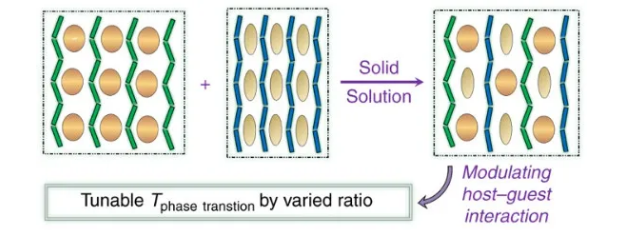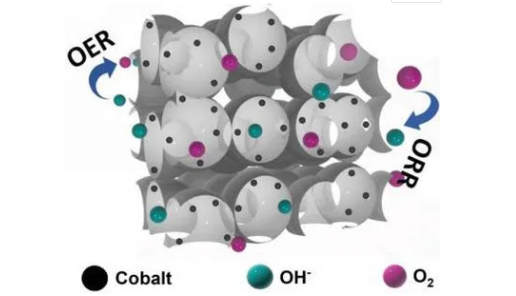
hotline:
17715390137
Tel/Wechat:
18101240246 (Technology)
0512-68565571
Email:mxenes@163.com (Sales Engineer)bkxc.bonnie@gmail.com
Scan the code to follow or search the official account on WeChat:
2D Materials Fronrier After paying attention,
click on the lower right corner to contact us,
Enter enterprise WeChat.
Professional Services Online

Spray-Drying Synthesis of MOFs, COFs, and Related Composites
Javier Troyano, Ceren Çamur, Luis Garzón-Tovar, Arnau Carné-Sánchez, Inhar Imaz*, and Daniel Maspoch*
Publication Date:June 4, 2020
https://doi.org/10.1021/acs.accounts.0c00133

Metal–organic frameworks (MOFs) and covalent organic frameworks (COFs) are among the most attractive porous materials today. They exhibit outstanding porosity for countless applications such as gas storage, CO2 capture, gas separation, sensing, drug delivery, and catalysis. Moreover, researchers have recently begun to combine MOFs or COFs with other functional materials to obtain composites that boast the respective strengths, and mitigate the respective weaknesses, of each component, enabling enhanced performance in many of the aforementioned applications. Accordingly, development of methods for fabrication of MOFs, COFs, and related composites is important for facilitating adoption of these materials in industry. One promising synthetic technique is spray-drying, which is already well-integrated in manufacturing processes for diverse sectors. It enables rapid, continuous and scalable production of dry microspherical powders in a single step, leading to lower fabrication costs and shorter production times compared to traditional methods.
In this Account, we outline our ongoing work on spray-drying synthesis of crystalline porous MOFs, COFs, and related composites. Versatile and tunable, spray-drying can be adapted to perform reactions involving coordination and covalent chemistry for the synthesis of micrometer spherical beads/superstructures of MOFs and COFs. Likewise, MOF- and COF-based composites can be synthesized using similar conditions as those for pure MOFs or COFs, through the simple introduction of additional functional materials into the feed precursor solution or colloid. Interestingly, spray-drying can also be done in water, thus providing the basis for its use as a scalable green method for industrial fabrication of these materials. To date, spray-drying has already been scaled up for pilot production (kilogram scale) of MOFs.
https://pubs.acs.org/doi/abs/10.1021/acs.accounts.0c00133
Molecule-based nonlinear optical switch with highly tunable on-off temperature using a dual solid solution approach
Shi-Yong Zhang, Xia Shu, Ying Zeng, Qing-Yan Liu, Zi-Yi Du, Chun-Ting He, Wei-Xiong Zhang & Xiao-Ming Chen
Nature Communications volume 11, Article number: 2752 (2020)

Nonlinear optical switches that reversibly convert between on/off states by thermal stimuli are promising for applications in the fields of photoelectronics and photonics. Currently one main drawback for practical application lies in the control of their switch temperature, especially for the temperature range near room temperature. By mixed melting treatment, here we describe an alloy-like nonlinear optical switch with tunable switch temperature via a dual solid solution approach within the coordination polymer system. We initially prepare a coordination polymer (i-PrNHMe2)[Cd(SCN)3], which functions as a high-contrast thermoresponsive nonlinear optical switch originating from a phase transition at around 328 K. Furthermore, by taking advantage of a synergistic dual solid solution effect, the melt mixing of it with its analogue (MeNHEt2)[Cd(SCN)3], which features an unequal anionic chain templated by an isomeric ammonium, can afford coordination polymer solid solutions with switch temperatures that are tunable in a range of 273–328 K merely by varying the component ratio.
https://www.nature.com/articles/s41467-020-15518-z.pdf
Au@Pt nanotubes within CoZn-Based Metal-Organic Framework for Highly Efficient Semi-Hydrogenation of Acetylene
Jiajia Wang; Haitao Xu; Chengcheng Ao; Xinbo Pan; Xikuo Luo; ShengJie Wei; Zhi Li; Lidong Zhang; Zhen-liang Xu; Yadong Li
iScience Pub Date : 2020-06-04
https://doi.org/10.1016/j.isci.2020.10123

Designing nanocatalysts with synergetic functional component is a desirable strategy to achieve both high activity and selectivity for industrially important hydrogenation reaction. Herein, we fabricated a core–shell hollow Au@Pt NTs@ZIFs (ZIF = zeolitic imidazolate framework; NT = nanotube) nanocomposite as highly efficient catalysts for semi-hydrogenation of acetylene. Hollow Au@Pt NTs was synthesized by epitaxial growth of Pt shell on Au nanorods followed with oxidative etching of Au@Pt nanorod. The obtained hollow Au@Pt NTs were then homogeneously encapsulated within ZIFs through in-situ crystallization. By combining the high activity of bimetallic nanotube and gas enrichment property of porous metal-organic frameworks, hollow Au@Pt NT@ZIF catalyst was demonstrated to show superior catalytic performance for the semi-hydrogenation of acetylene, in terms of both selectivity and activity, over those of monometallic Au and solid bimetal nanorod@ZIF counterparts. This catalysts design idea is believed to be inspirable for the development of highly efficient nanocomposite catalysts.
https://www.sciencedirect.com/science/article/pii/S2589004220304181
Function-oriented synthesis of two-dimensional (2D) covalent organic frameworks – from 3D solids to 2D sheets
Xing Li; Priya Yadav; Kian Ping Loh
Chem. Soc. Rev., 2020, Pub Date : 2020-06-03
https://doi.org/10.1039/D0CS00236D

Covalent organic frameworks (COFs) are constructed from the precise integration of small organic blocks into an extended, porous framework via covalent linkages. COFs can also be viewed as an organic solid consisting of a periodic array of one dimensional (1-D) channels. Although a wide range of applications have been envisioned for COFs, understanding the structure–property correlation at the level of chemical linkages, topology, pore size and functionality is needed to unlock the potential of these materials. Herein, we review some emerging applications of two-dimensional (2D) COFs in solid-state photoluminescence, stimuli-responsive COFs, gas storage, ion conduction and energy storage, and discuss the intricate design principles that enable these COFs to perform better than their building blocks or polymeric counterparts. Going beyond bulk 2D-COFs, molecular thin organic layers called COFene can be derived from the exfoliation of 2D COFs, generating new properties for applications in optoelectronic devices, catalysis and separation.
https://pubs.rsc.org/en/content/articlelanding/2020/cs/d0cs00236d
A Zeolitic‐Imidazole Frameworks‐Derived Interconnected Macroporous Carbon Matrix for Efficient Oxygen Electrocatalysis in Rechargeable Zinc–Air Batteries
Abdoulkader Ibro Douka Yangyang Xu Huan Yang Shahid Zaman Ya Yan Hongfang Liu Manzola Abdou Salam Bao Yu Xia
First published:02 June 2020
https://doi.org/10.1002/adma.202002170

Nanostructures derived from zeolitic‐imidazole frameworks (ZIFs) gain much interest in bifunctional oxygen electrocatalysis. However, they are not satisfied well for long‐life rechargeable zinc–air batteries due to the limited single particle morphology. Herein, the preparation of an interconnected macroporous carbon matrix with a well‐defined 3D architecture by the pyrolysis of silica templated ZIF‐67 assemblies is reported. The matrix catalyst assembled zinc–air battery exhibits a high power density of 221.1 mW cm−2 as well as excellent stability during 500 discharging/charging cycles, surpassing that of a commercial Pt/C assembled battery. The synergistic effect from the interconnected macroporous structure together with abundant cobalt–nitrogen–carbon active sites justify the excellent electrocatalytic activity and battery performance. Considering the advanced nanostructures and performance, the as‐synthesized hybrid would be promising for rechargeable zinc–air batteries and other energy technologies. This work may also provide significant concept in the view of electrocatalysis design for long‐life battery.
https://onlinelibrary.wiley.com/doi/abs/10.1002/adma.202002170
Source of information: MOFs online

| Reminder: Beijing Beike New Material Technology Co., Ltd. supplies products only for scientific research, not for humans |
| All rights reserved © 2019 beijing beike new material Technology Co., Ltd 京ICP备16054715-2号 |